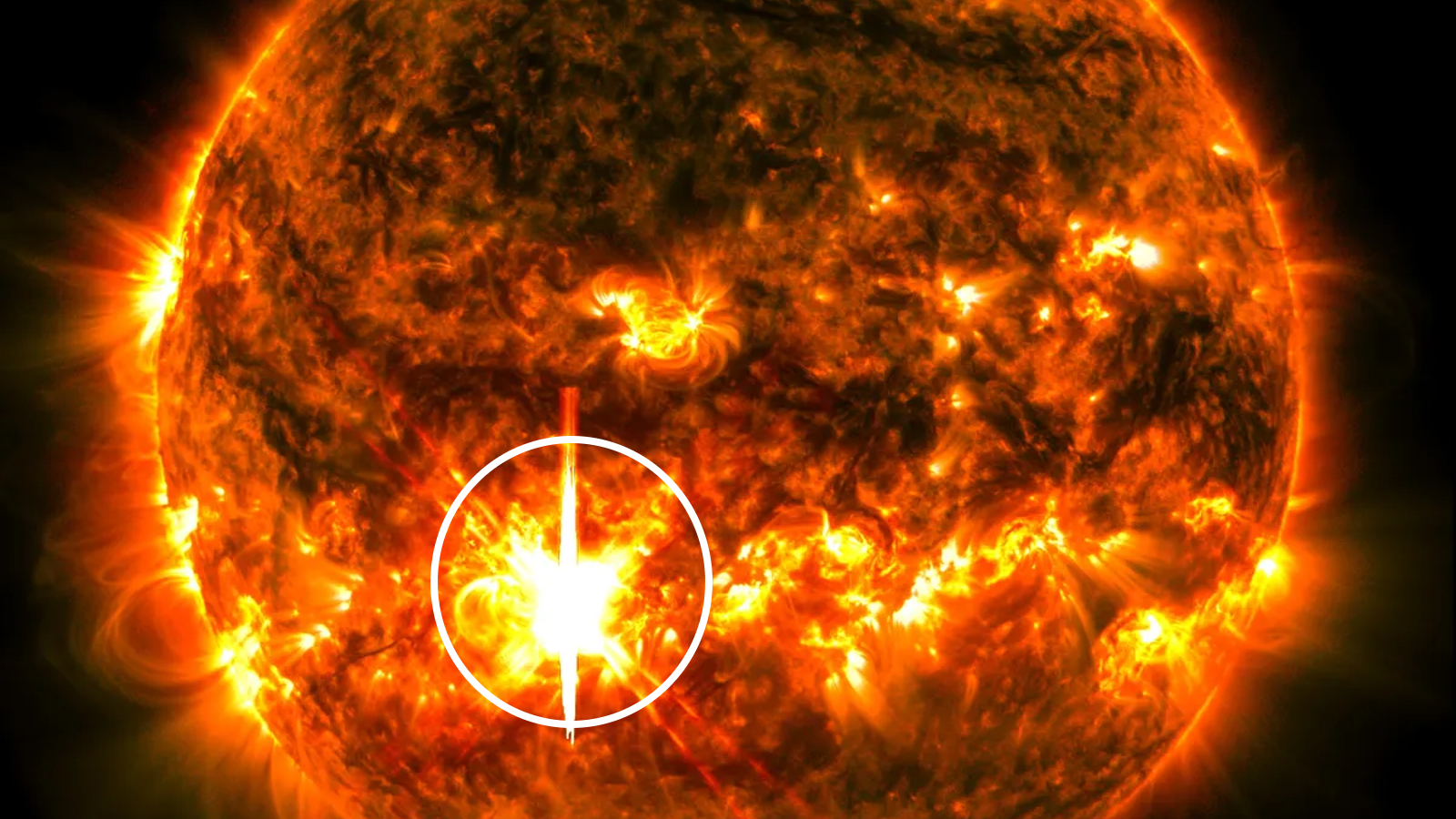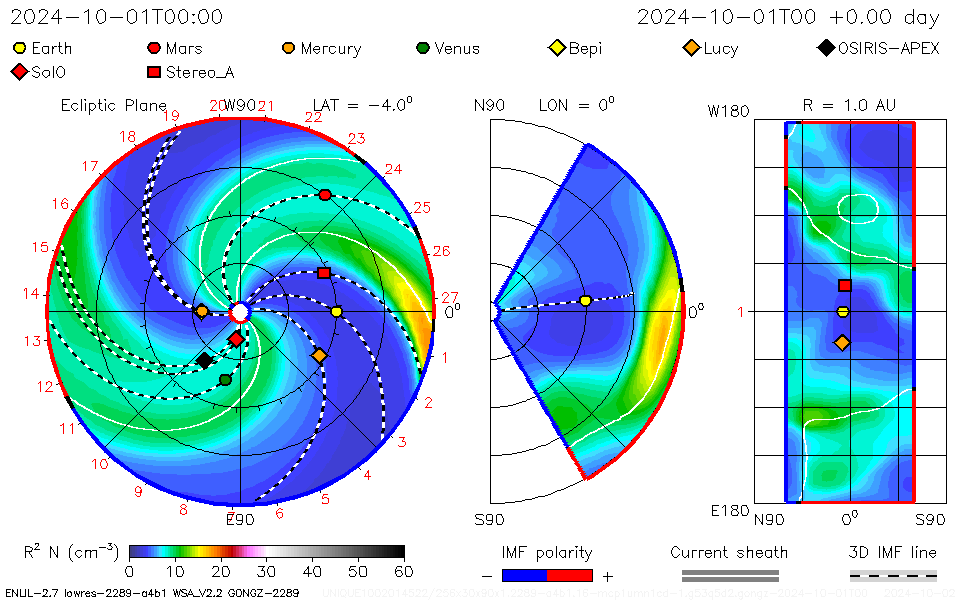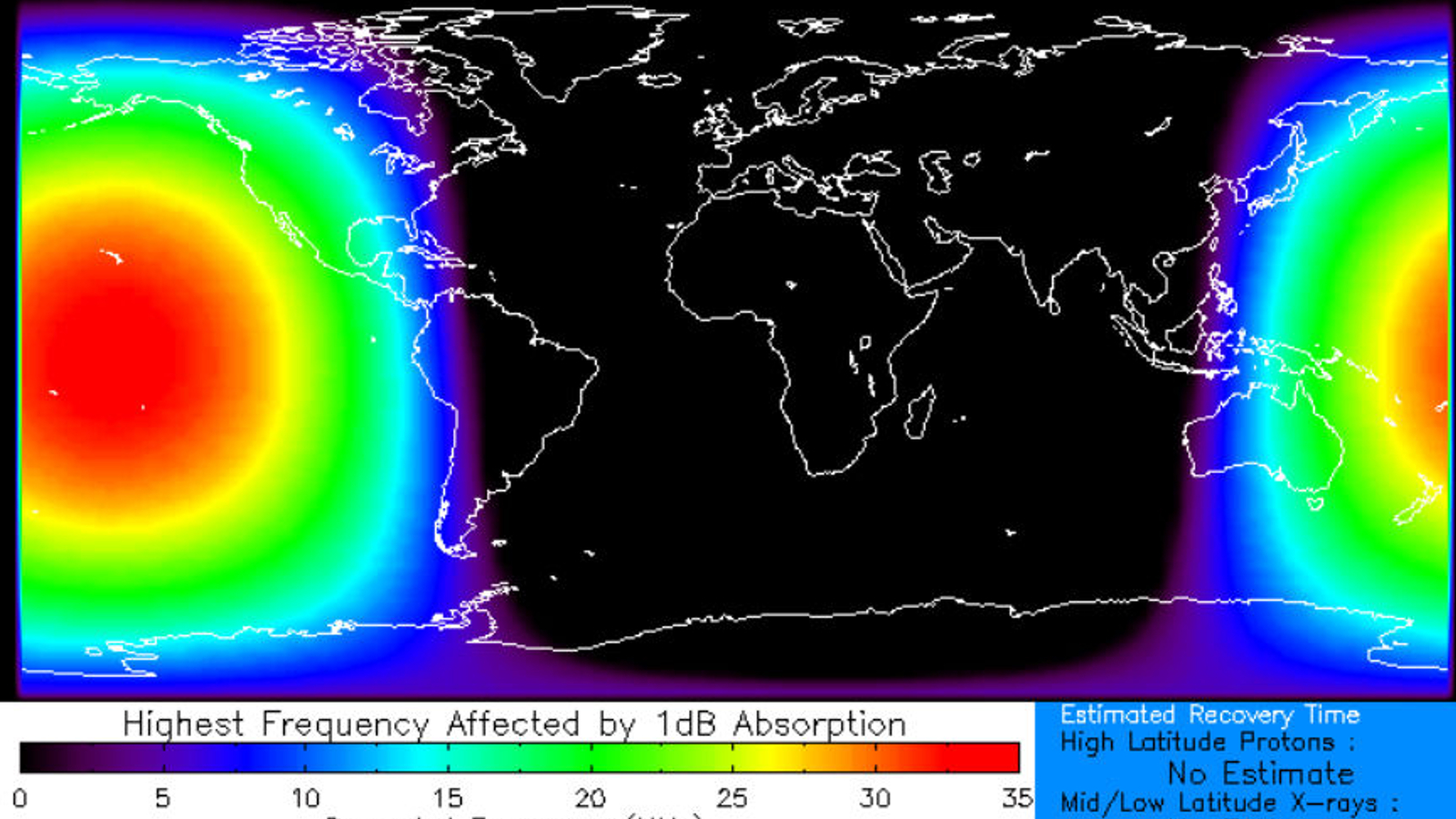
The sun has unleashed an enormous X-class solar flare, temporarily triggering a radio blackout above parts of the U.S. and unleashing a hefty coronal mass ejection (CME) that will likely slam into our planet, potentially triggering vibrant aurora displays later this week.
The X-class solar flare — the most powerful type the sun can produce — exploded outward from sunspot AR3842 near the solar equator at around 6 p.m. ET on Tuesday (Oct. 1). The flare had a magnitude of X7.1, making it the second most powerful solar explosion of the current solar cycle, Solar Cycle 25, which began in 2019. The most powerful flare was a monster X8.7 magnitude blast in May, which was the most powerful flare in the last seven years.
Radiation from Tuesday's supercharged flare bypassed Earth's magnetic shield, or magnetosphere, and ionized the upper parts of the upper atmosphere, creating a temporary radio blackout above large parts of the Pacific Ocean, including Hawaii. The explosion also hurled a CME — a cloud of fast-moving plasma and radiation — into space, which NASA predicts will collide with Earth on Saturday (Oct. 5), according to Spaceweather.com.
When the CME hits our planet, it will likely trigger a disturbance in the magnetosphere, known as a geomagnetic storm, that enables solar particles to penetrate deep into the atmosphere and trigger vibrant aurora displays at unusually low latitudes. A similar geomagnetic storm occurred in mid-August after another X-class flare hurled a CME right at us.
Related: Could a powerful solar storm wipe out the internet?

The latest solar outburst is another sign that we have likely entered solar maximum — the peak of the sun's roughly 11-year solar cycle, which occurs right before its magnetic field completely flips.
Scientists had initially predicted that the solar maximum would begin next year and be less active than the peaks of past solar cycles. However, it quickly became obvious that the sun's explosive peak would arrive sooner and be more active than expected, forcing researchers to update their forecasts for the first time in their history.
2024 has already been rife with solar activity. In May, our planet experienced its most powerful geomagnetic storm for 21 years after a barrage of CMEs, which triggered potentially the most widespread auroras for 500 years. And in August, the number of visible sunspots hit a 23-year high.

So far this year, the sun has unleashed a total of 41 X-class solar flares, which is more than the last nine years combined, according to SpaceWeatherLive.com.
Over the next few months, the number of geomagnetic storms and auroras could also spike further as Earth's magnetic field becomes more closely aligned with the solar wind around the fall equinox.
Throughout the rest of the solar maximum, which could last for at least another year, there is an increased chance of the sun unleashing even more immense solar storms on par with the Carrington Event of 1859 — the most powerful solar storm on record. If such a storm were to hit us today, it could disrupt ground-based infrastructure, such as the power grid, and knock out most of our satellites, potentially causing trillions of dollars worth of damages.







